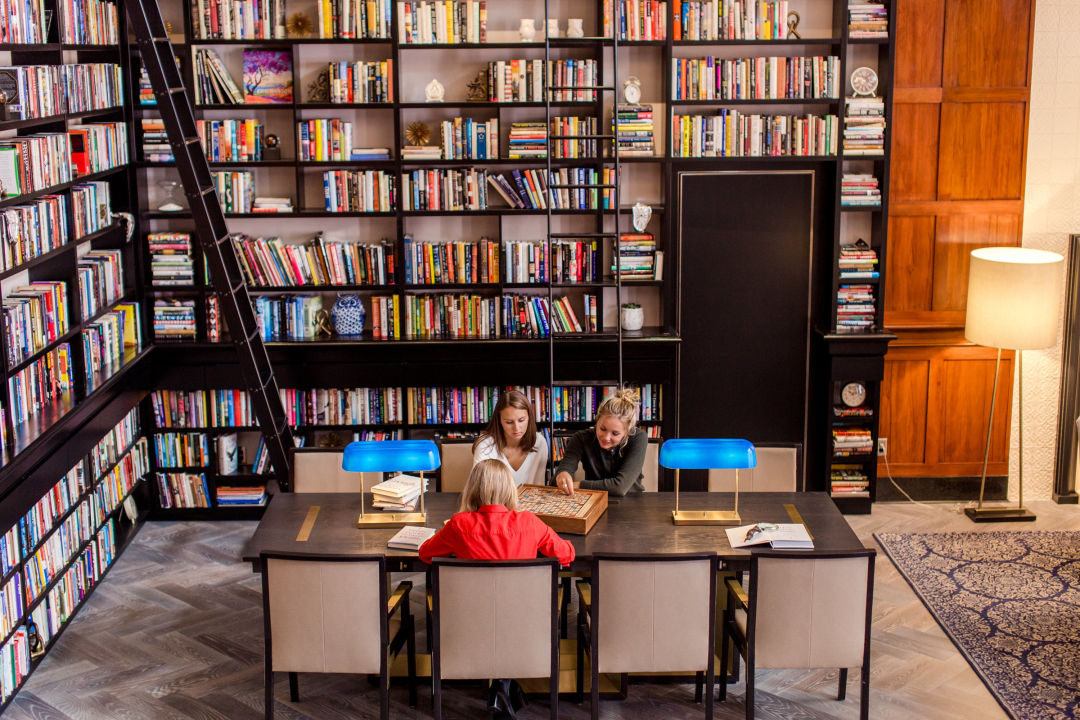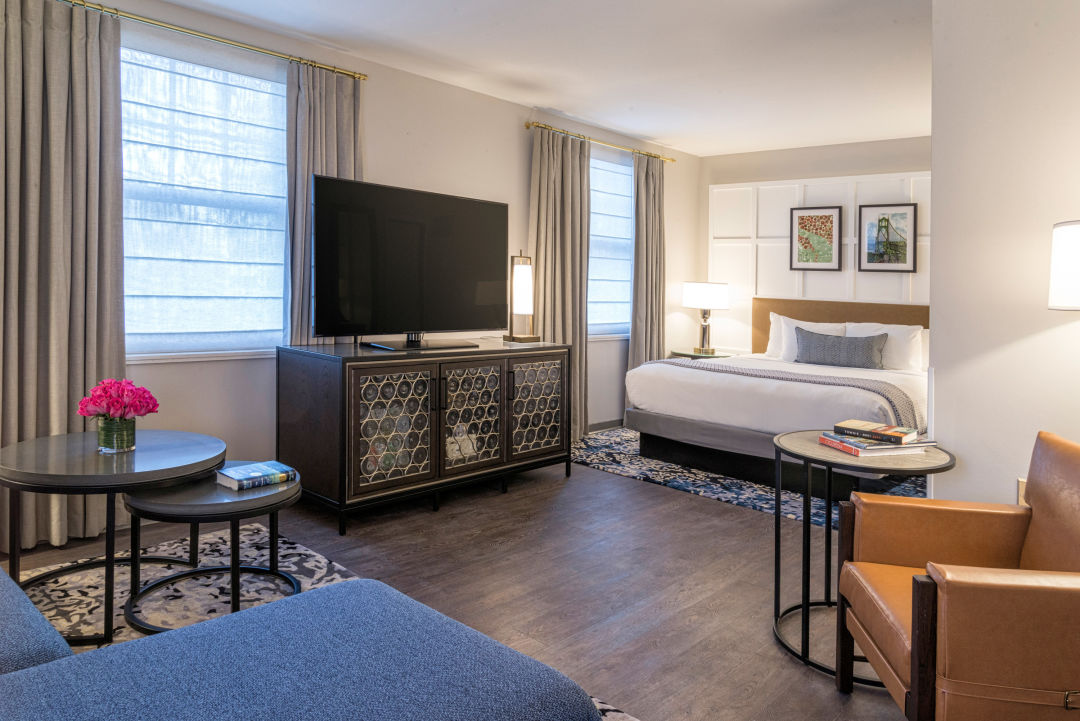What’s Behind the Bellman in the Beefeater Costume?

A Bellman dressed in a traditional Beefeater uniform, joined by a furry, four-legged guest of the hotel.
Image: Provenance Hotels
Heading south down Broadway just before you reach the iconic Portland marquee sign, you’ll pass a man and a dog - both of which have become beacons of tradition and hospitality at the front of the Heathman Hotel.
The man – or rather, the bellman – has for generations been distinguished by a traditional Beefeater uniform, although no one can quite pinpoint when the hotel adopted the elaborate garb worn by King Henry VII’s royal bodyguards beginning in 1485. However, one thing is certain – the bellman in the Beefeater uniform, standing just one block away from the theatrical lights of the Portland marquee sign, came about in the years following 1926, the year the original Heathman Hotel ushered in its first guests.
The dog – or rather, a bronze sculpture of an English Bulldog – sits heeled at the entrance of the hotel in honor of Zelda, a world-famous English bulldog adopted by an ardent frequenter of The Heathman, Carol Gardner, in 1996. Together, the bronze figure of Zelda and the bellman in the Beefeater uniform man the doors to a hotel quite unlike any other in the city – one with a history that is tied to the arts and a story that today is celebrated under a polished new renovation.
Those who have transplanted to, or are passing through, the City of Roses may not be privy to how the rain-soaked town earned Portland as its name. As chance would have it, it came down to a coin toss. When the city’s founders, Francis Pettygrove and Asa Lovejoy took to naming the city in 1845, each made a case for naming the site after their respective home towns. Pettygrove, hailing from Portland, Maine, and Lovejoy, a native of Boston, Massachusetts, settled the debate with three flips of a penny. With chance falling on Pettygrove’s side, the city came to be known as Portland and the penny that starred in the toss is now on display in the Oregon Historical Society. This lesser-known history of the Portland Penny is reflected in the newly redesigned lobby of the Heathman in the form of floor-to-ceiling columns encased with thousands of pennies illuminated by hidden LED lights, nodding ever-so-subtly the city’s beginnings.

Located in the heart of the hotel, The Library at the newly renovated Heathman puts over 3,000 volumes signed by their authors on full display.
Image: Provenance Hotels
Past the lobby and into the heart of the hotel lies The Library. The soaring two-story space houses more than 3,000 volumes signed by their authors in a grand bookcase that spans the height of the room. Works from the likes of Stephen King, Bill Murray, Margaret Atwood, President Jimmy Carter and the late Anthony Bourdain span the shelves. While the sheer size of the collection has remained unchanged with the completion of the renovation, the experience of The Library is altogether new and at last living up to its name. It is as if the roving ladder that glides over the bookcase exists as a symbol of the hotel’s dedication to putting its love for the arts and its most notorious feature within reach for its patrons.
Equally stirring as the stories that live in plain sight throughout the hotel are those that exist behind the scenes and in the archives of the hotel’s history. Word of a passageway just off the Heathman’s mezzanine that connects to the adjacent Arlene Schnitzer Concert Hall paints a picture of who’s-who’s slipping sight unseen from the theatre into the hotel, stealing away to their guestroom or being whisked out the front door. The very same mezzanine that passed patrons through to “The Schnitz” was once a transporter of another kind. In the hotel’s earliest years from the 1930’s to the 1950’s, the mezzanine was home to the studios of the Portland radio station KOIN. The station boasted a roster of musicians and entertainers larger than all other local stations combined and, from their transmitters high above the nearby West Hills, reached listening audiences as far as California, Nevada and Idaho.

Newly renovated guestrooms designed with a soft, neutral palate and art created by locally-based artists.
Image: Provenance Hotels
Today, the Heathman reaches audiences far beyond the home states of KOIN’s earliest broadcast, and yet, the hotel remains as historic as it is new. With herringbone wood floors and neutral-toned guestrooms come a new way of cherishing the hotel’s stories – through its art, its traditions and its manner. It is an artistic respite well worth beholding in-person, with an overnight bag in tow.
